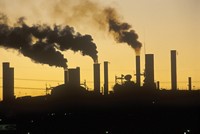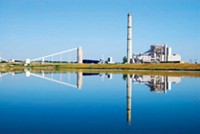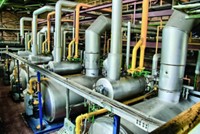Advertisement
Grab your lab coat. Let's get started
Welcome!
Welcome!
Create an account below to get 6 C&EN articles per month, receive newsletters and more - all free.
It seems this is your first time logging in online. Please enter the following information to continue.
As an ACS member you automatically get access to this site. All we need is few more details to create your reading experience.
Not you? Sign in with a different account.
Not you? Sign in with a different account.
ERROR 1
ERROR 1
ERROR 2
ERROR 2
ERROR 2
ERROR 2
ERROR 2
Password and Confirm password must match.
If you have an ACS member number, please enter it here so we can link this account to your membership. (optional)
ERROR 2
ACS values your privacy. By submitting your information, you are gaining access to C&EN and subscribing to our weekly newsletter. We use the information you provide to make your reading experience better, and we will never sell your data to third party members.
Environment
EPA Revises Pollution Standards For Industrial Boilers
Toxic Emissions: Narrowed rule targets the largest boilers that emit the most pollution
by Glenn Hess
December 3, 2011
The Environmental Protection Agencyis proposing changes to Clean Air Act standards for industrial boilers and certain incinerators that would slash emissions of mercury, soot, and other toxic air pollutants, but reduce compliance costs for industry.
The proposal released today would revise a set of regulations for boilers and solid waste incinerators EPA finalized in February under a court-ordered deadline. EPA agreed to revisit those standards in response to criticism by manufacturers and many members of Congress that the agency’s initial plan would have imposed a massive burden on the economy.
“With this action, EPA is applying the right standards to the right boilers,” said Gina McCarthy, assistant administrator for EPA’s Office of Air and Radiation. “Gathering the latest and best real-world information is leading to practical, affordable air pollution safeguards that will provide the vital and overdue health protection that Americans deserve.”
EPA said it plans to issue a revised final rule in the spring of 2012.
The American Chemistry Council (ACC), a trade association representing the nation’s largest chemical manufacturers, welcomed the revised standards. “We appreciate EPA’s thoughtful consideration of these rules and willingness to make sensible changes,” said ACC President and CEO Cal Dooley. “While we need to review the rules for technical details, it appears that improvements have been made.”
These include, Dooley said, more flexible compliance options for meeting emission limits, allowing the use of work practice standards for certain pollutants, and providing more flexibility for units burning clean gases.
EPA said the maximum achievable control technology standards outlined in its February ruling would now apply to less than 1% of the country’s boilers and offer major public health benefits, including the prevention of 8,100 premature deaths and 52,000 asthma attacks every year beginning in 2015. In addition, the agency said, the revised final rule will cost businesses about $3 billion, nearly 50% less than its estimate for the standards as originally proposed in 2010.
Public health groups also praised the new regulations. “It is past time to move forward with these lifesaving standards,” the American Lung Association said in a statement. “Research has shown that toxic air pollution from industrial boilers harm human health, targeting the circulatory, respiratory, nervous, endocrine, and other essential life systems.”
Boilers burn a variety of fuels, including coal, natural gas, and oil, to generate heat for industrial and manufacturing processes. They are the second-largest source of toxic mercury emissions, after coal-fired power plants.





Join the conversation
Contact the reporter
Submit a Letter to the Editor for publication
Engage with us on Twitter